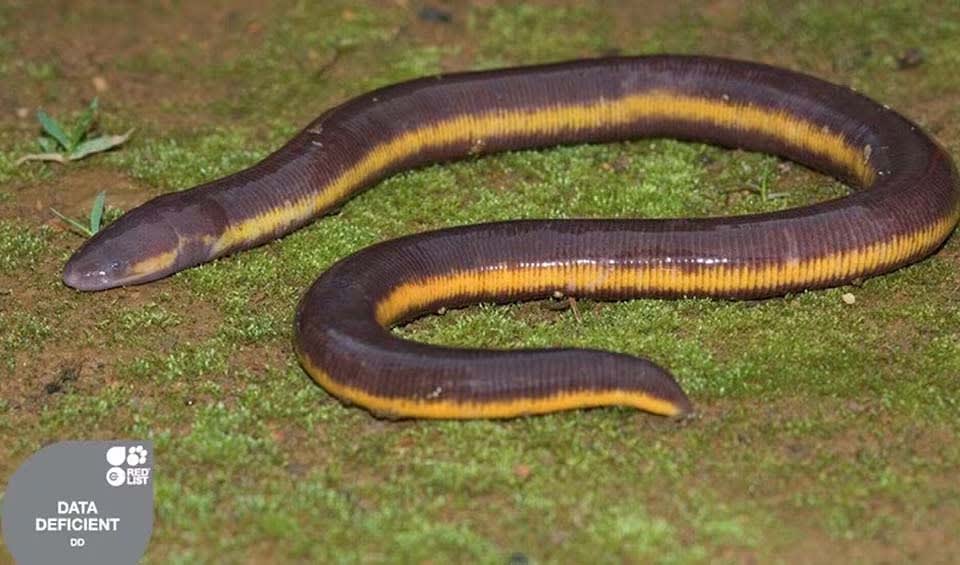Ichthyophis – Asian caecilians
Native to southeast Asia
These limbless creatures exhibit a range of adaptations, from their coloration to their hunting techniques and habitat preferences. They typically exhibit skin coloration that includes shades of gray, brown, or olive-green on their dorsal side, while their ventral side is lighter in color. One of the most striking features of their appearance is the presence of annuli, a ring-like pattern that runs along their bodies. These annuli serve as distinctive markers and contribute to their overall cryptic appearance.
The skin of Ichthyophis caecilians is notably slimy, giving them a slippery and moist texture. Researchers have likened the sensation of touching their skin to grabbing a bar of soap, highlighting the peculiar tactile experience these amphibians offer.
In terms of hunting and feeding behavior, Ichthyophis employ a unique strategy. When they detect prey, they launch an attack, seizing the prey item. Subsequently, they engage in a spinning motion, disorienting their prey before dragging it underground. This method of subduing and consuming prey allows them to feed on a variety of organisms efficiently, typically swallowing their food whole.
Asian caecilians, including those of the Ichthyophis genus, primarily inhabit burrows they dig in moist soil. These subterranean habitats provide them with the necessary protection and moisture levels required for their survival. Additionally, they may seek refuge under leaf litter, further demonstrating their preference for concealed and damp environments.
Species in this genus
Kodagu striped Ichthyophis
A stripy amphibian native to the Ghats of India
Long-headed caecilian
Endemic to the tropical Western Ghats of Kerala, India



